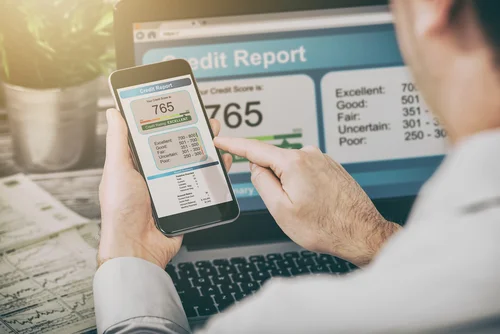
What is a Credit Score?
Breaking down the important components of what makes up your credit score.
As the old saying goes, age is just a number. Well, in the world of credit scores, a number can mean a lot more than you think. It’s a number that carries high value among financial institutions. A bad credit score can prevent you from getting a loan for the new car or new house you have always wanted, while a good credit score can help you get out of an unforeseen tough financial situation. Knowing your score and understanding what contributes to it, is essential to making good credit decisions.
Do I have a good or bad score?
Bad -> 300-629
Fair -> 630-689
Good -> 690-719
Excellent -> 720-850
Whether you have a good or bad score currently based on the numbers above, remember that a credit score can change very quickly. There are 5 main components that make up your credit score:
So, in looking at the chart above, we can see that by making payments on time and paying down your total debt is the best way to improve your credit score. While the length of credit history and credit mix also play important roles. You may be surprised to learn that income to debt ratio, length of time in residence, employment history, child support obligations and rental agreements ARE NOT factored into your credit score. These items may impact individual lending opportunities, but will not be reflected in your actual score.
Sometimes it can be hard to visualize just how impactful a few points on your credit score can make on your life a lot harder financially. Below is an example how having a better credit score can get you better rates and create lower monthly payments. (APR amounts are just examples)
$20,000 Car Loan for 60 months
| Credit Score | Loan APR (%) | Monthly Payment |
| 720-850 | 3.31% | $362 |
| 690-719 | 4.70% | $375 |
| 660-689 | 6.76% | $394 |
| 620-659 | 10.50% | $430 |
| 590-619 | 15.70% | $483 |
| 500-589 | 17.10% | $498 |
In the above example, the difference between a great credit score and a bad credit score could cost you more than $1500 per year in additional loan payments! Financial institutions will give you much better rates on loans if they see that you have a history of maintaining good credit.
Federal law mandates that everyone is entitled to a free copy of your credit report every 12 months from AnnualCreditReport.com. Pulling reports from this website will not count as a hit on your credit and will not affect your score. You can retrieve your actual score as well for a nominal fee of $8-$10.
The best way to maintain a healthy credit score is to do the following:
-
Pay your bills on time.
-
Keep bills current and under the limit for 12 consecutive months.
-
Keep the total credit used at less than 30% of your total credit approved for use.
-
Do not open new accounts unless absolutely necessary.



